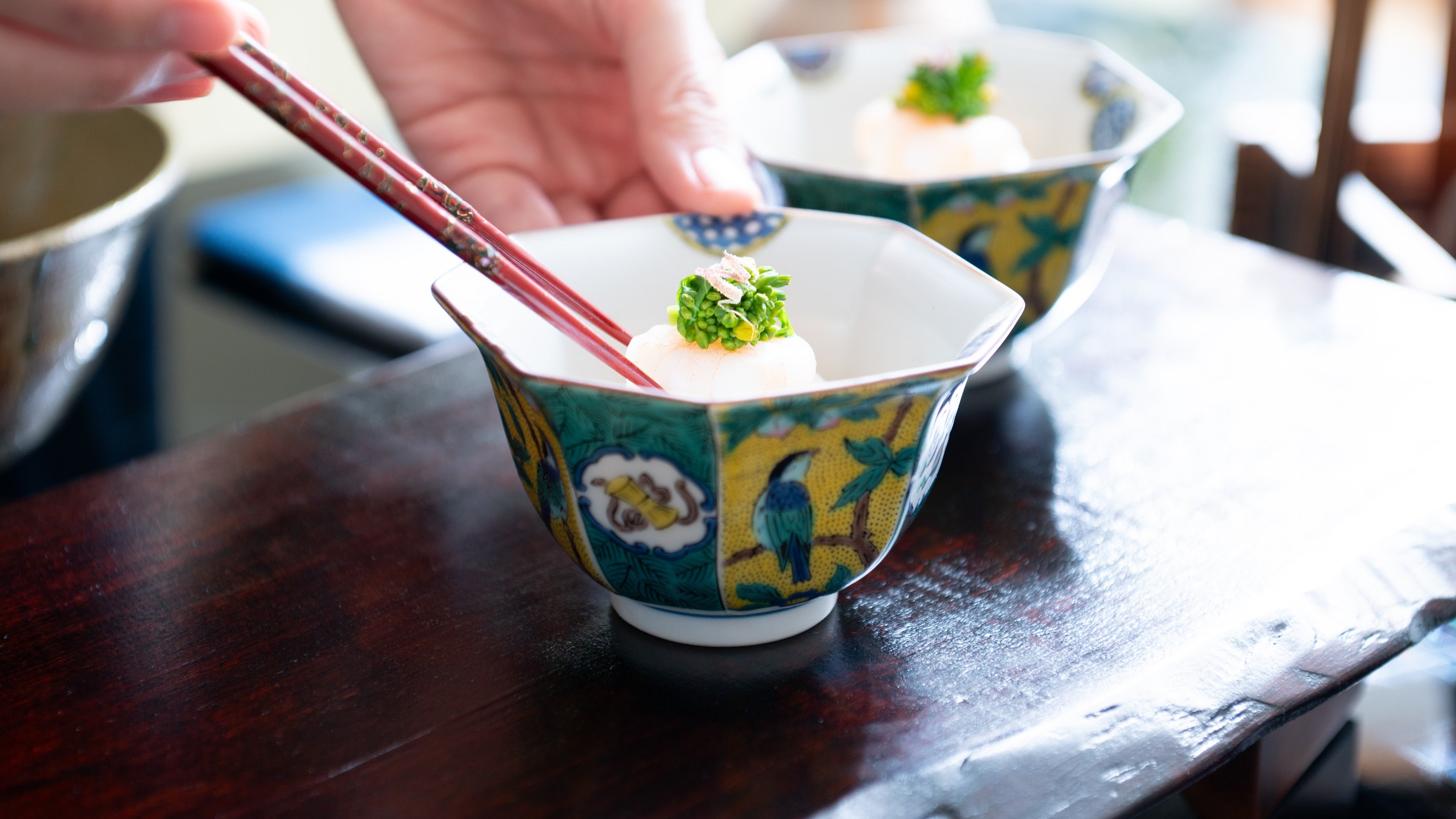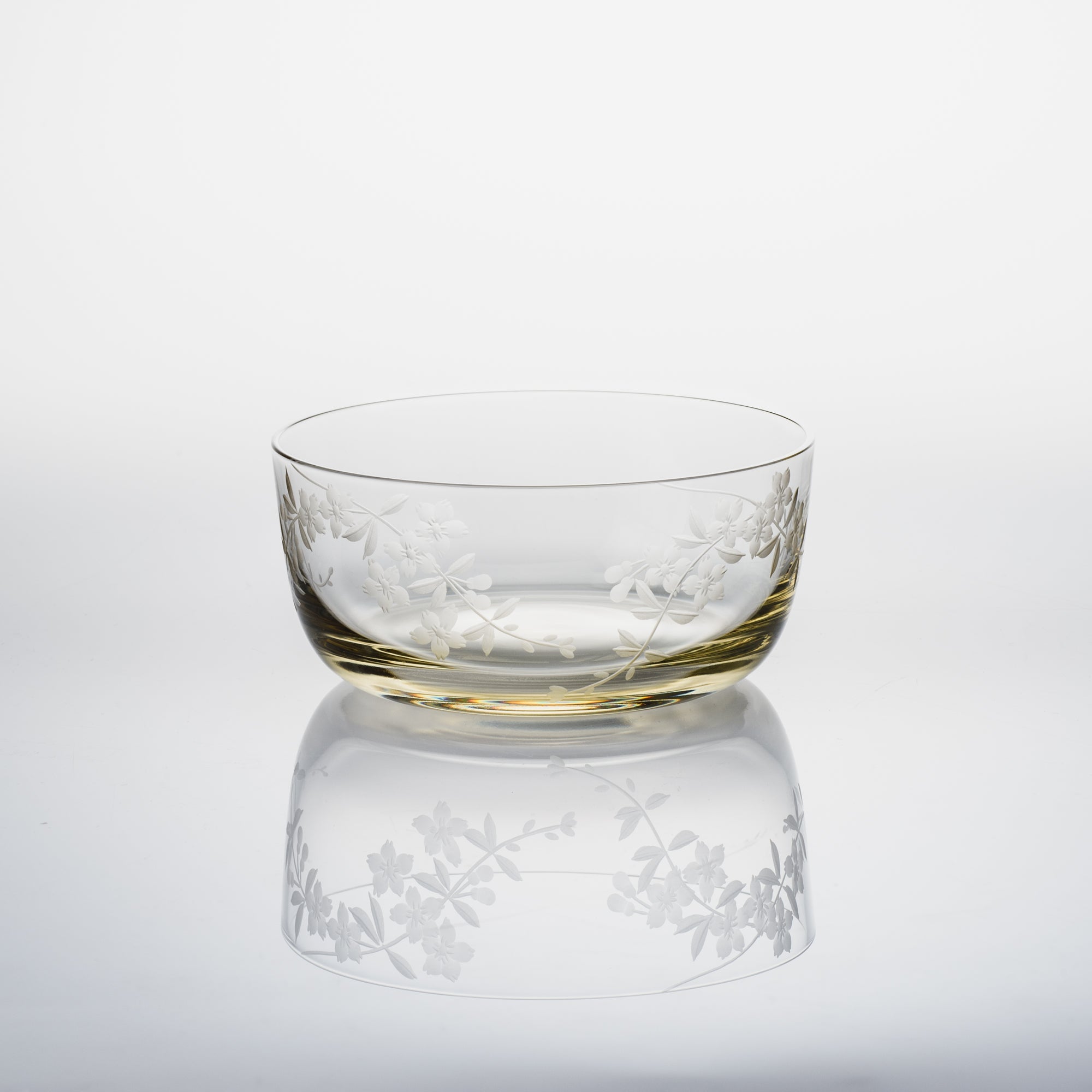
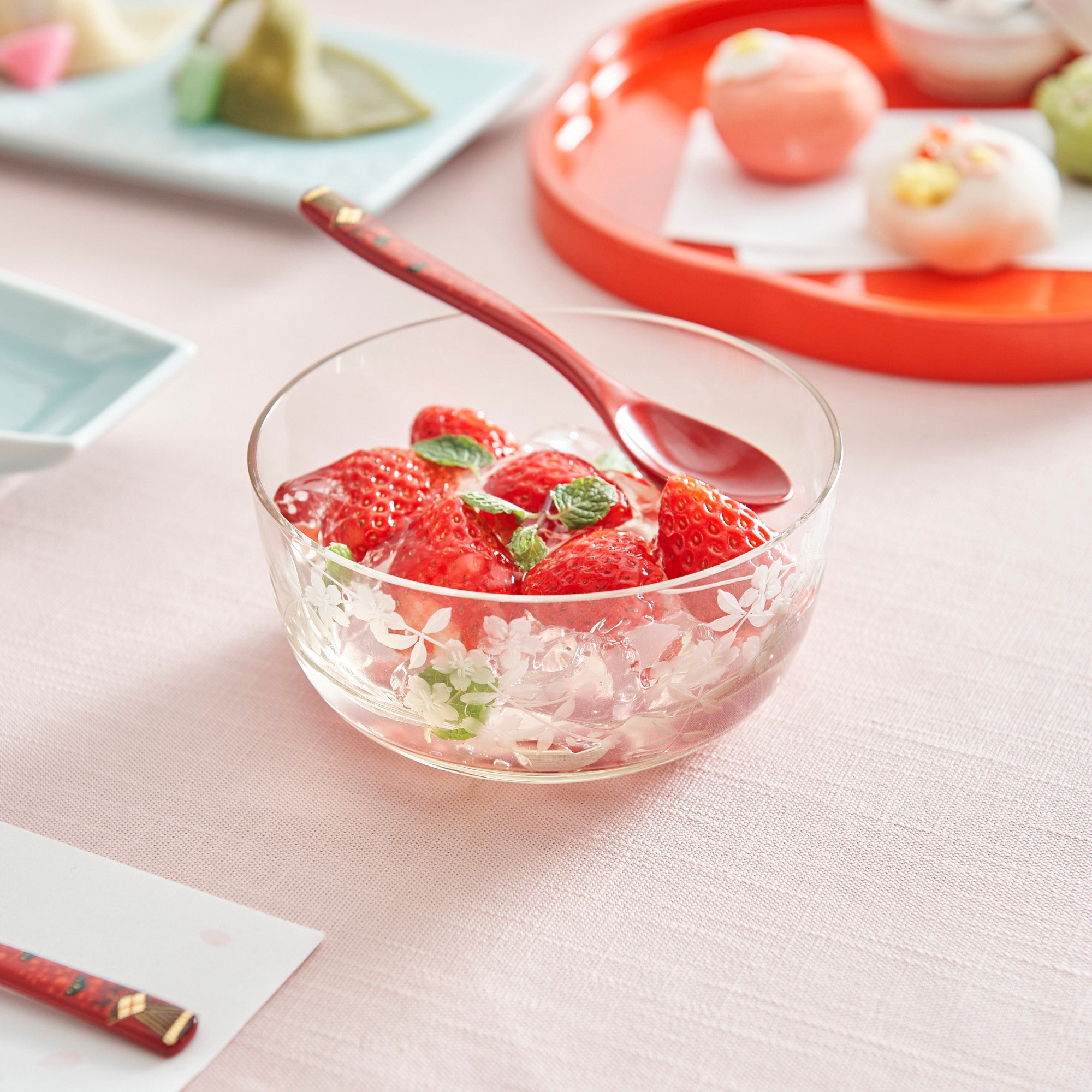
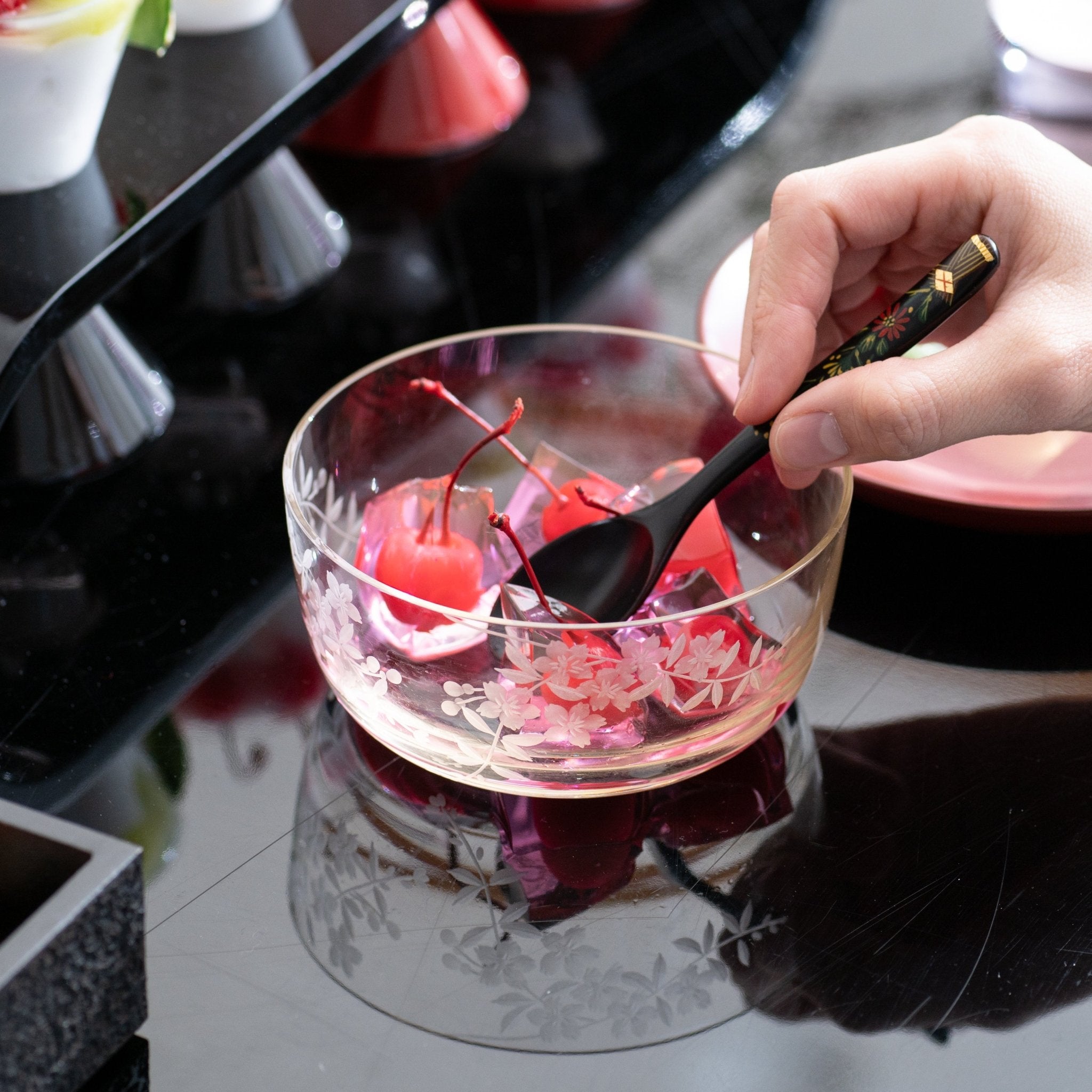
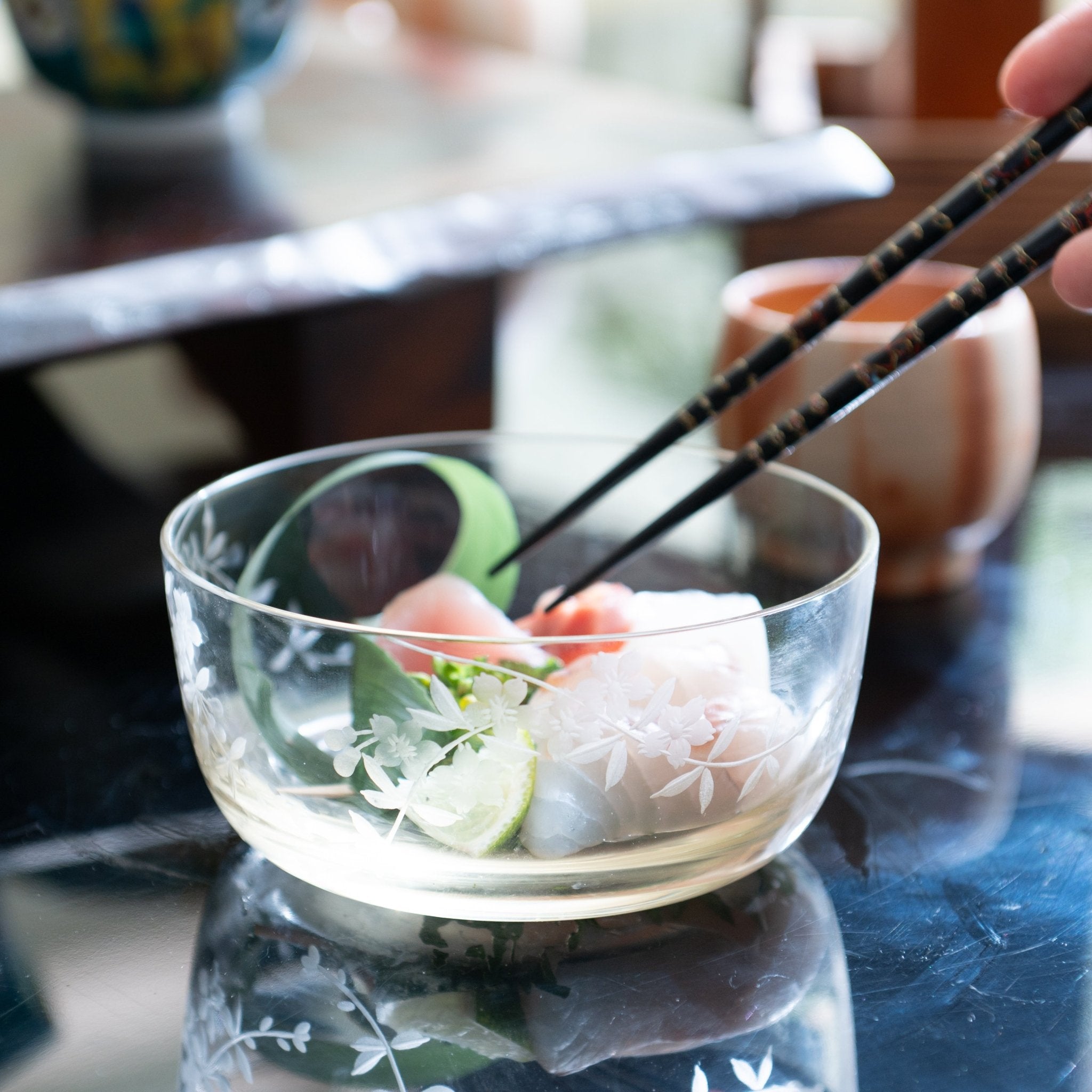
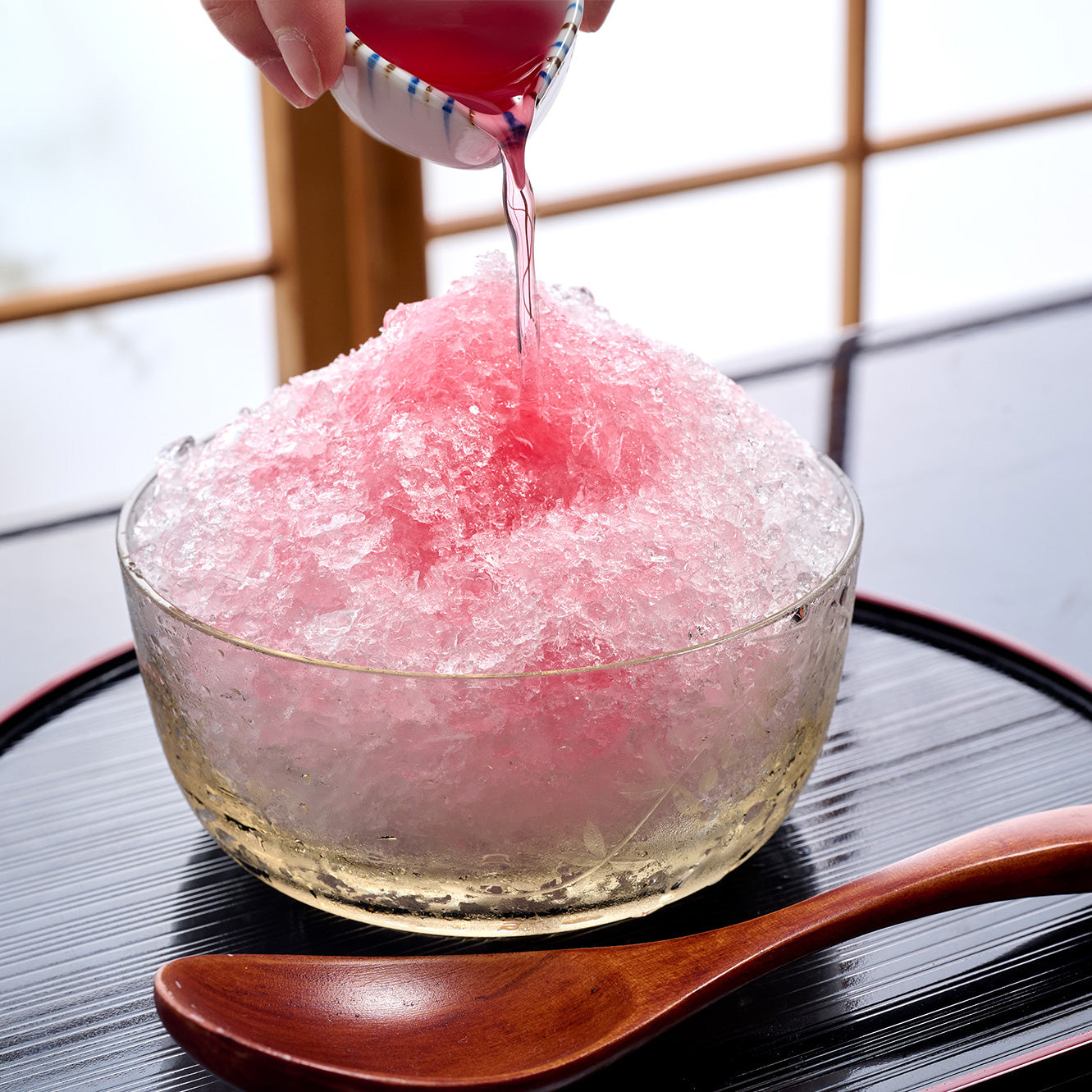

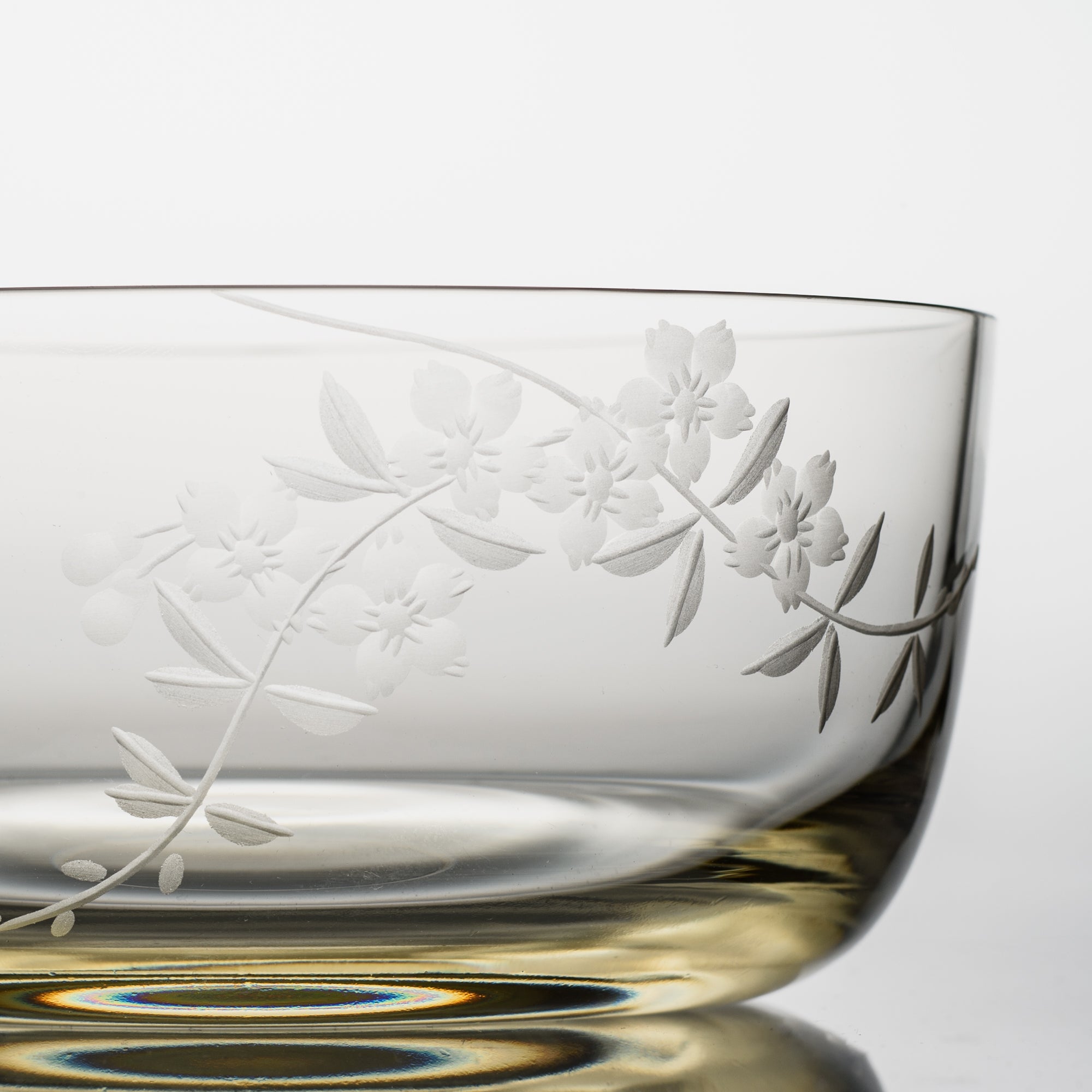
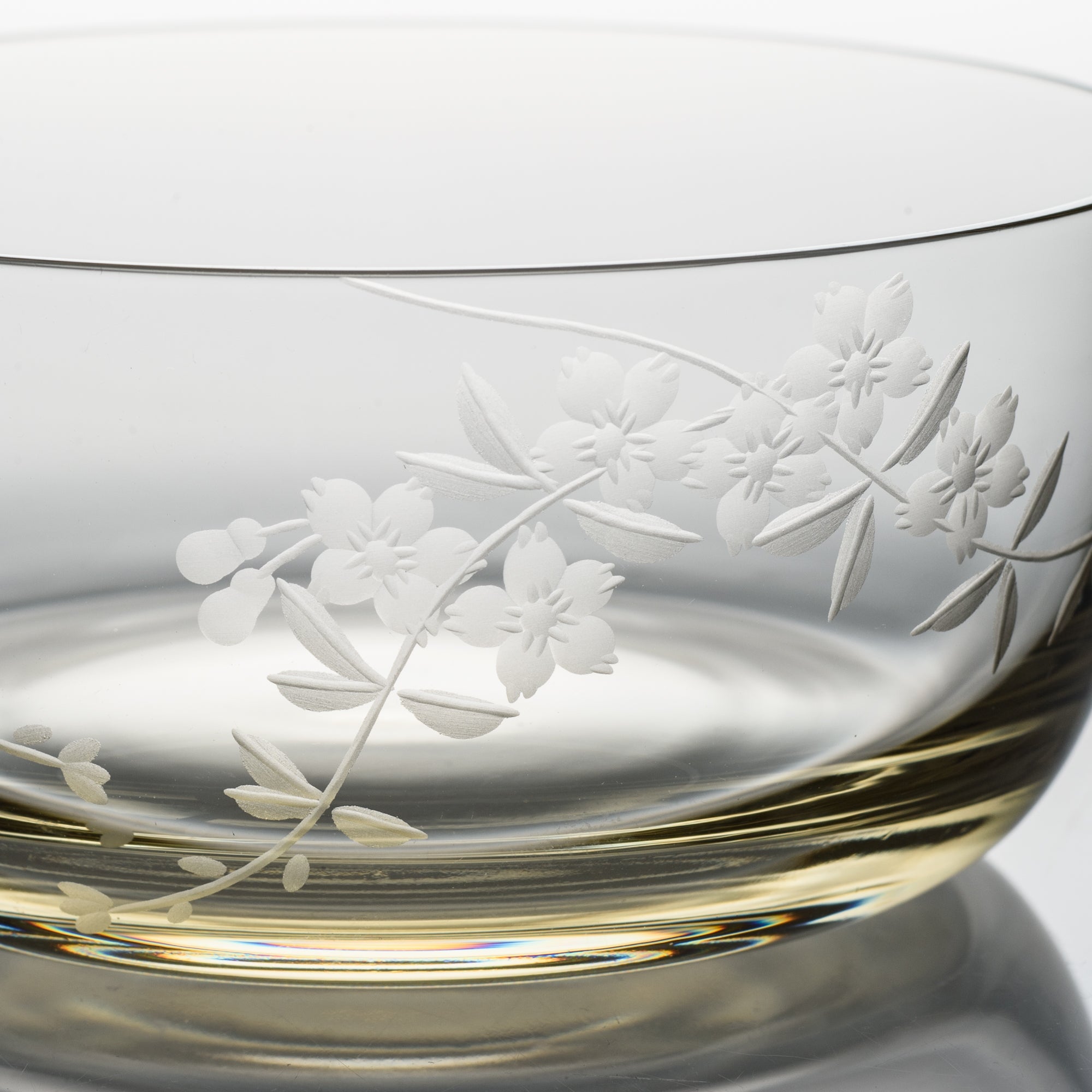
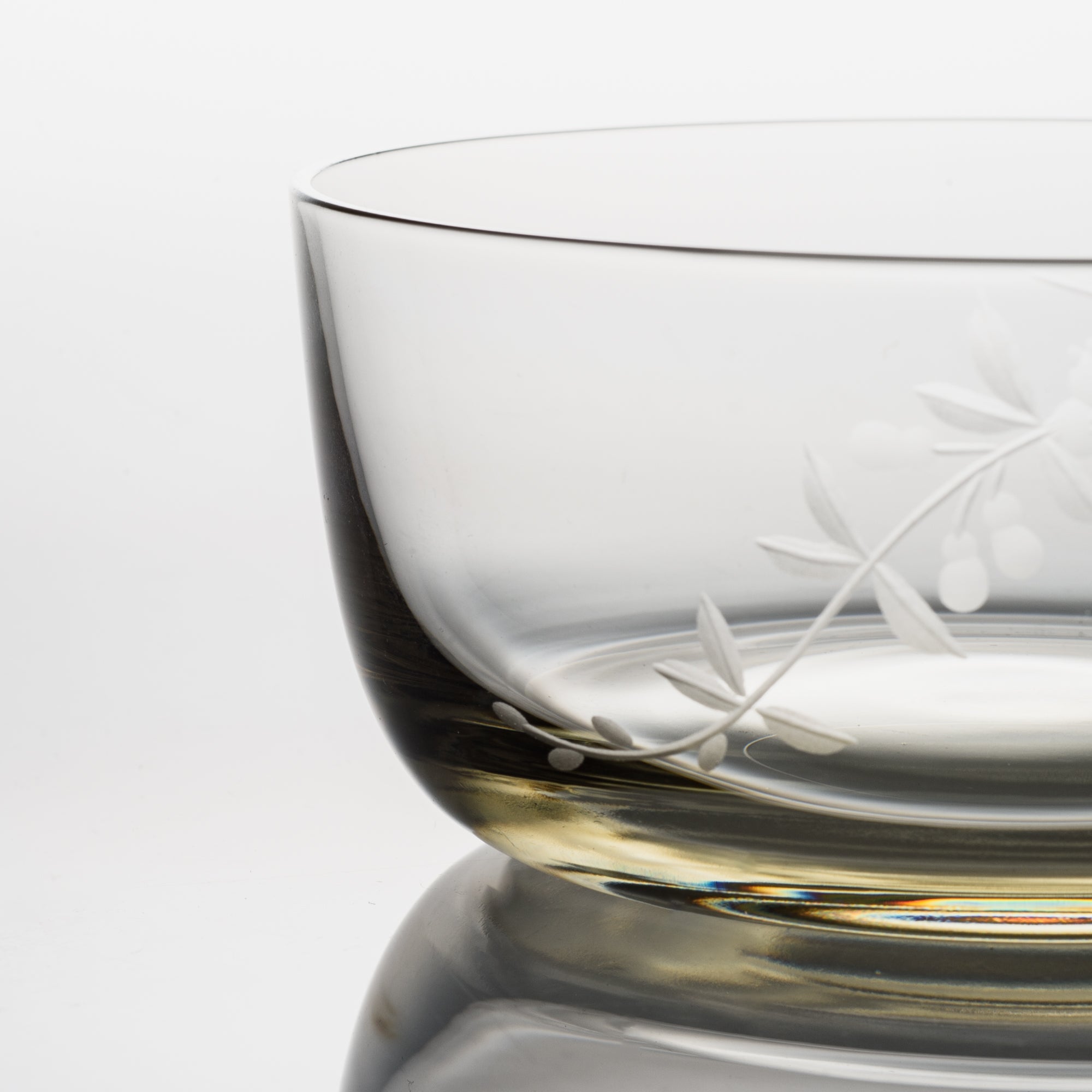
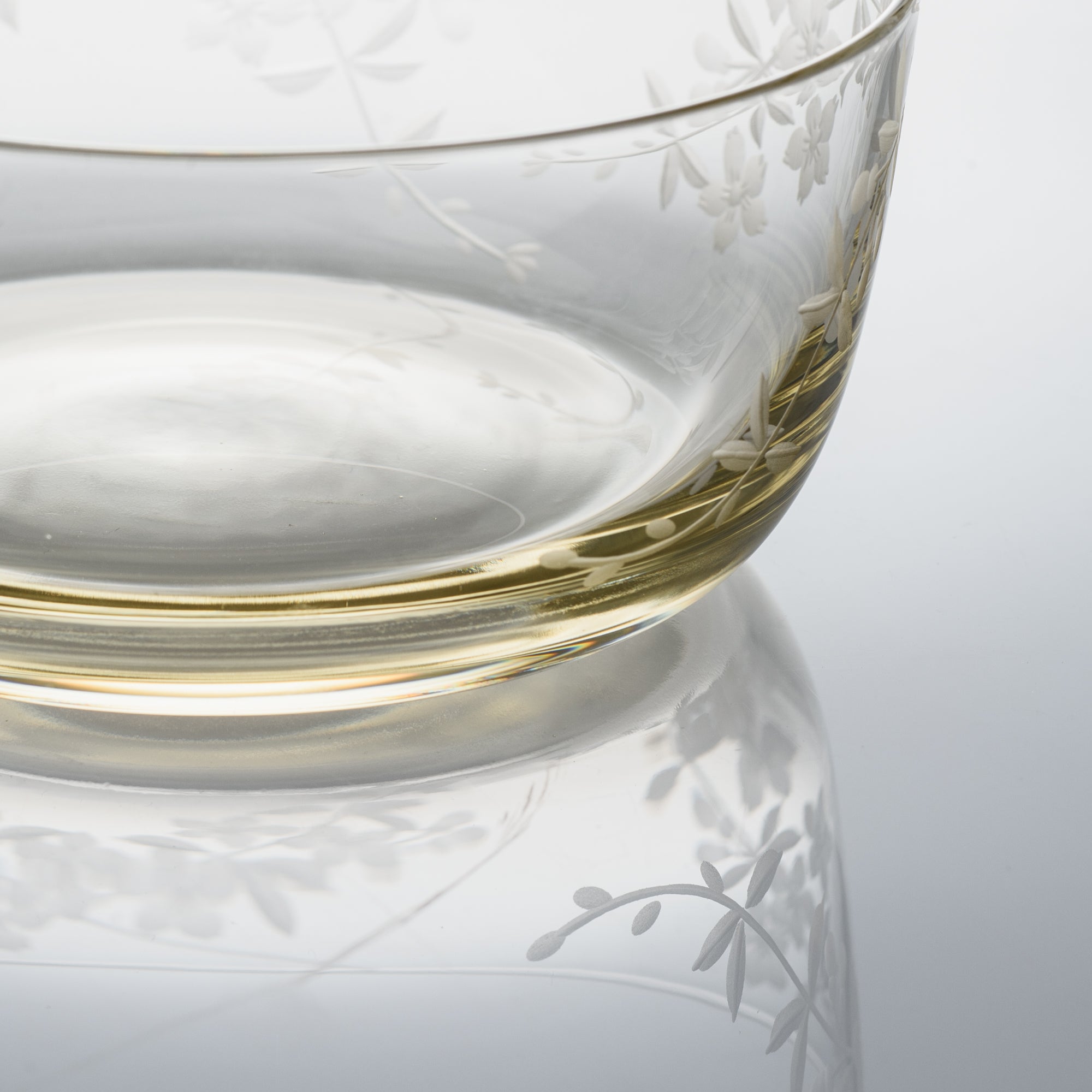
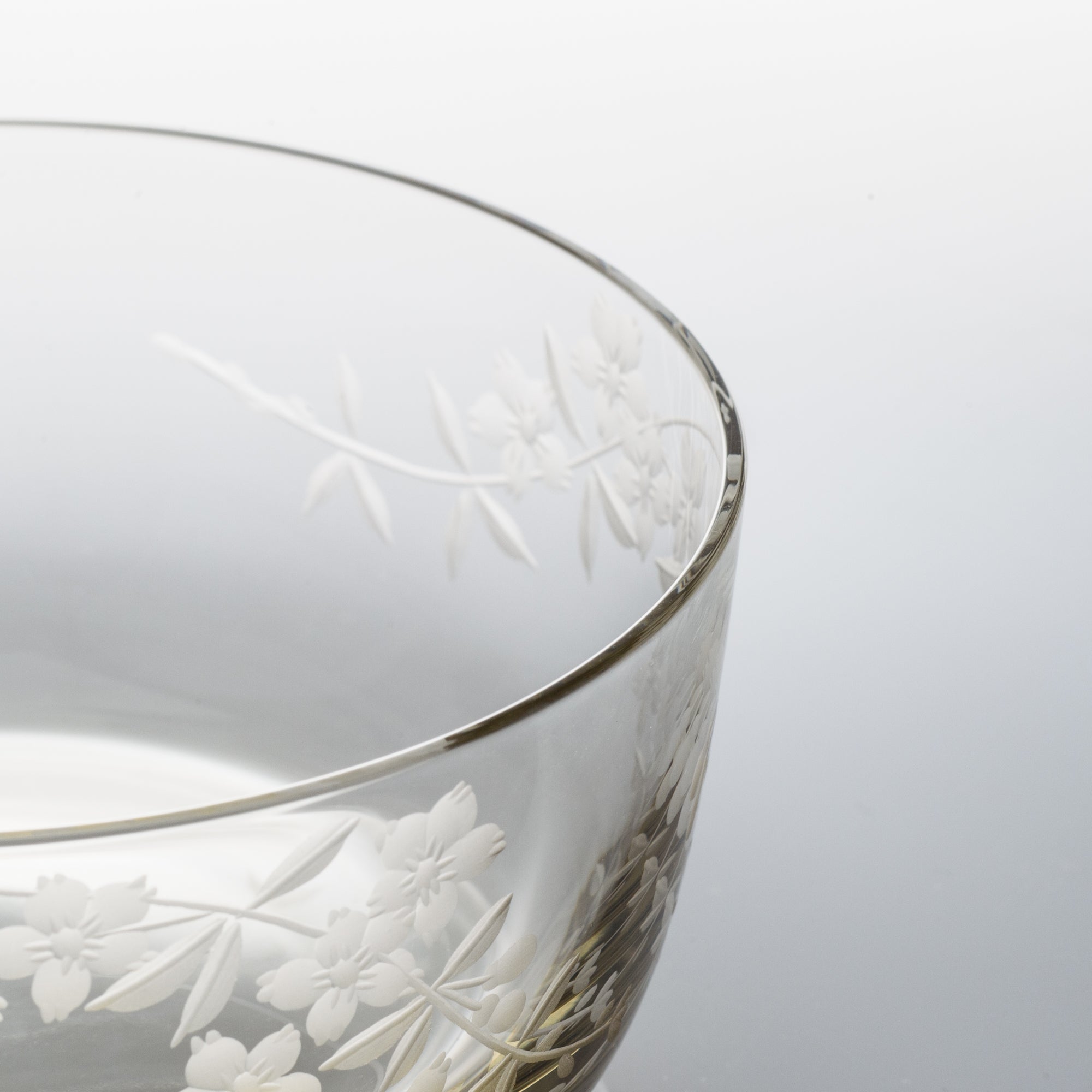
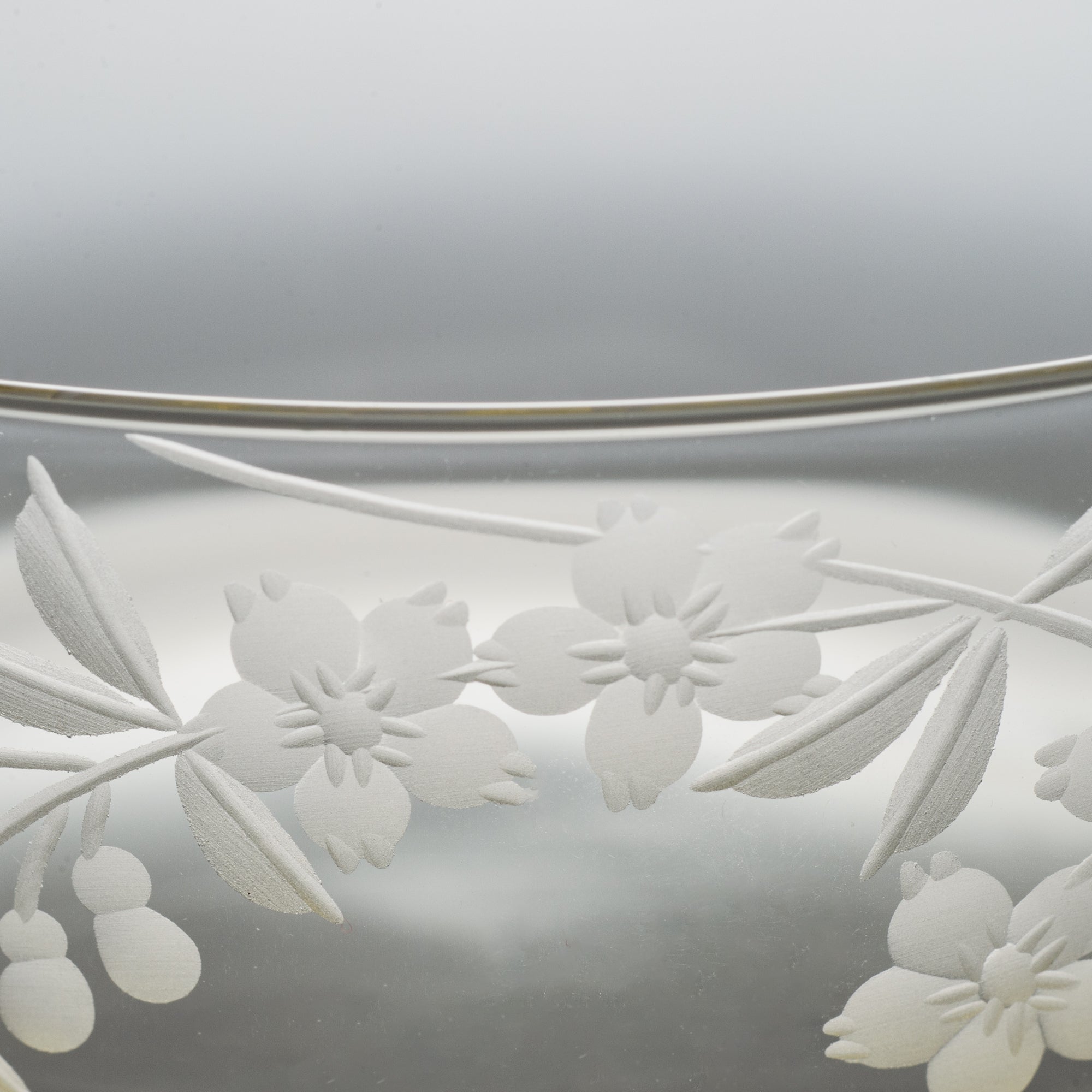
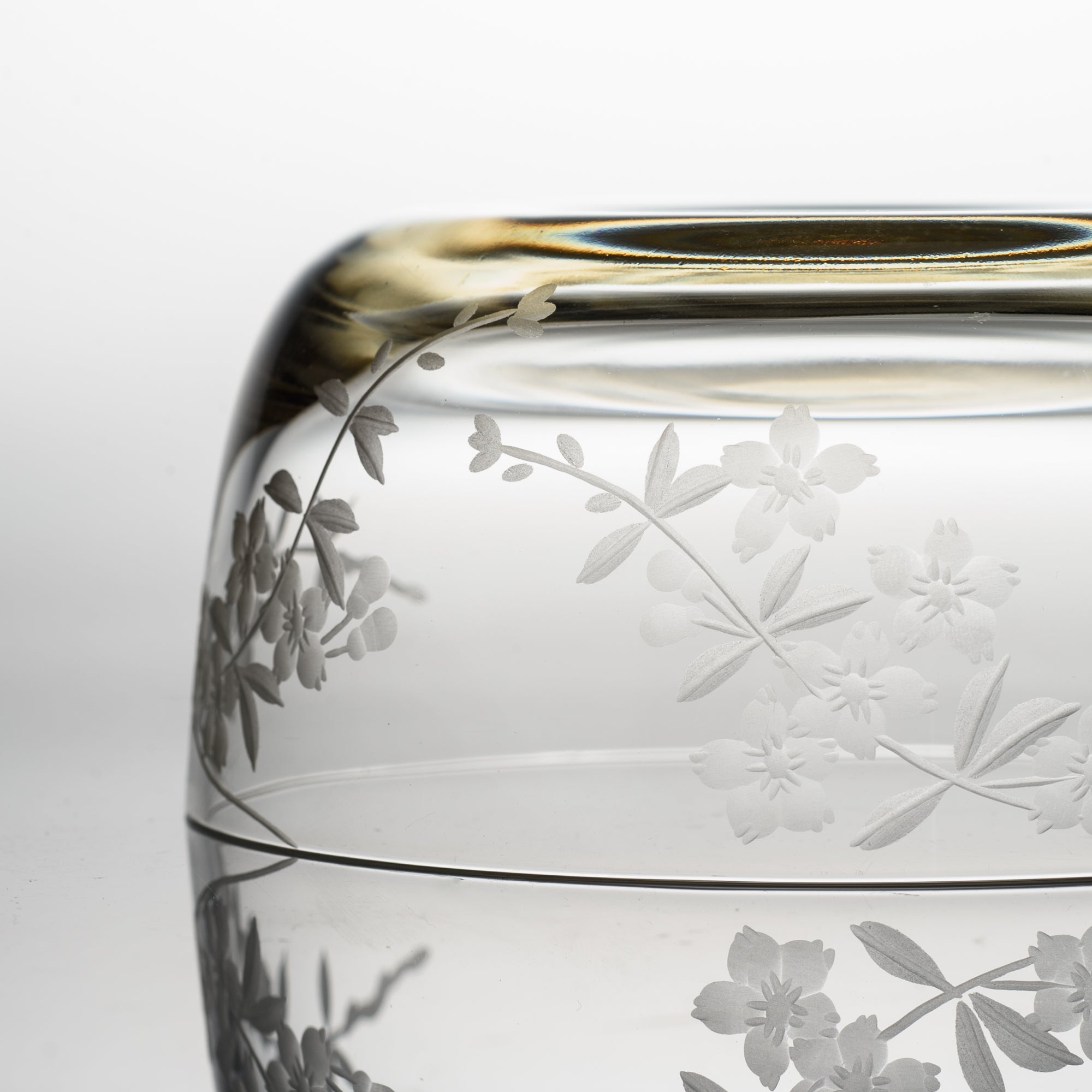


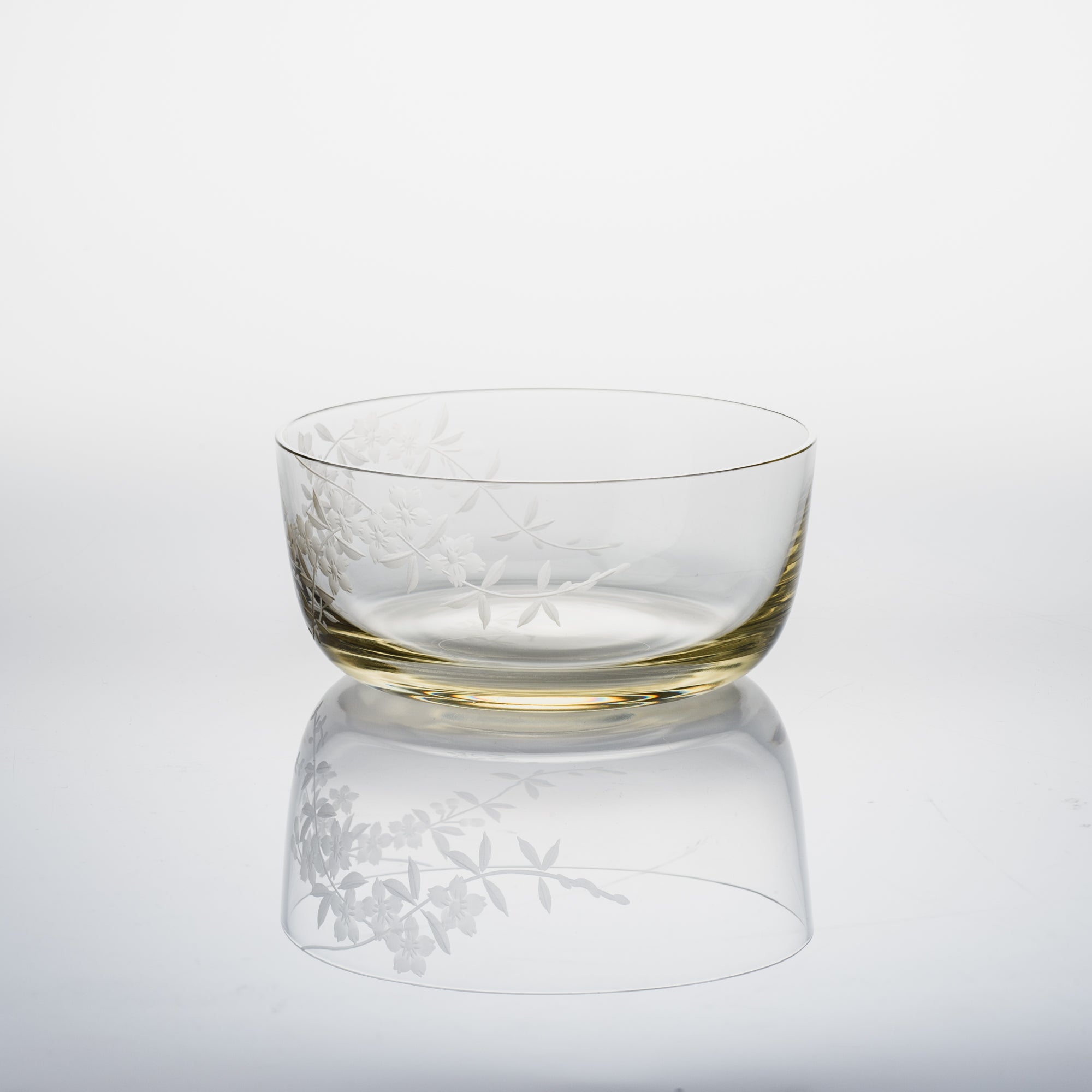
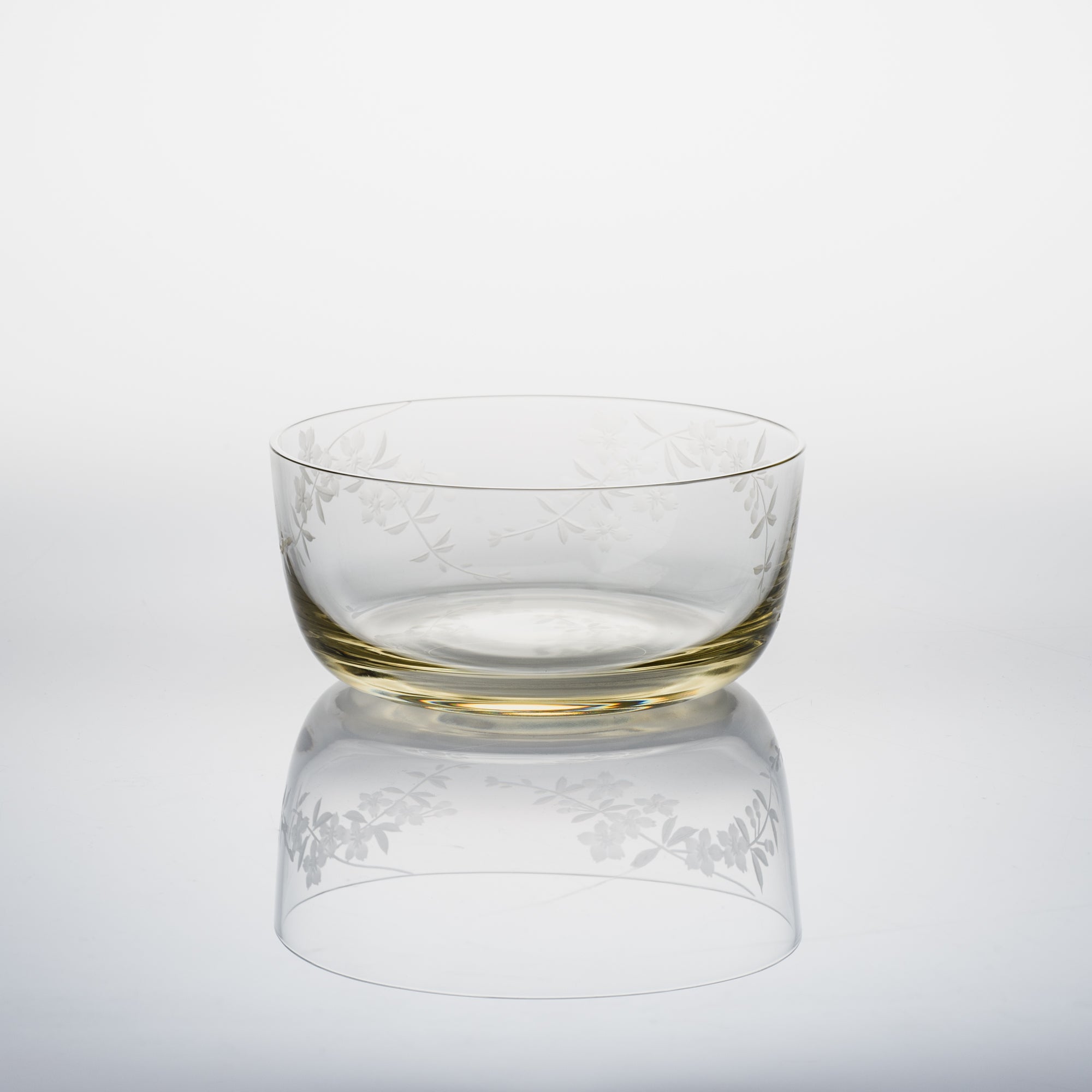
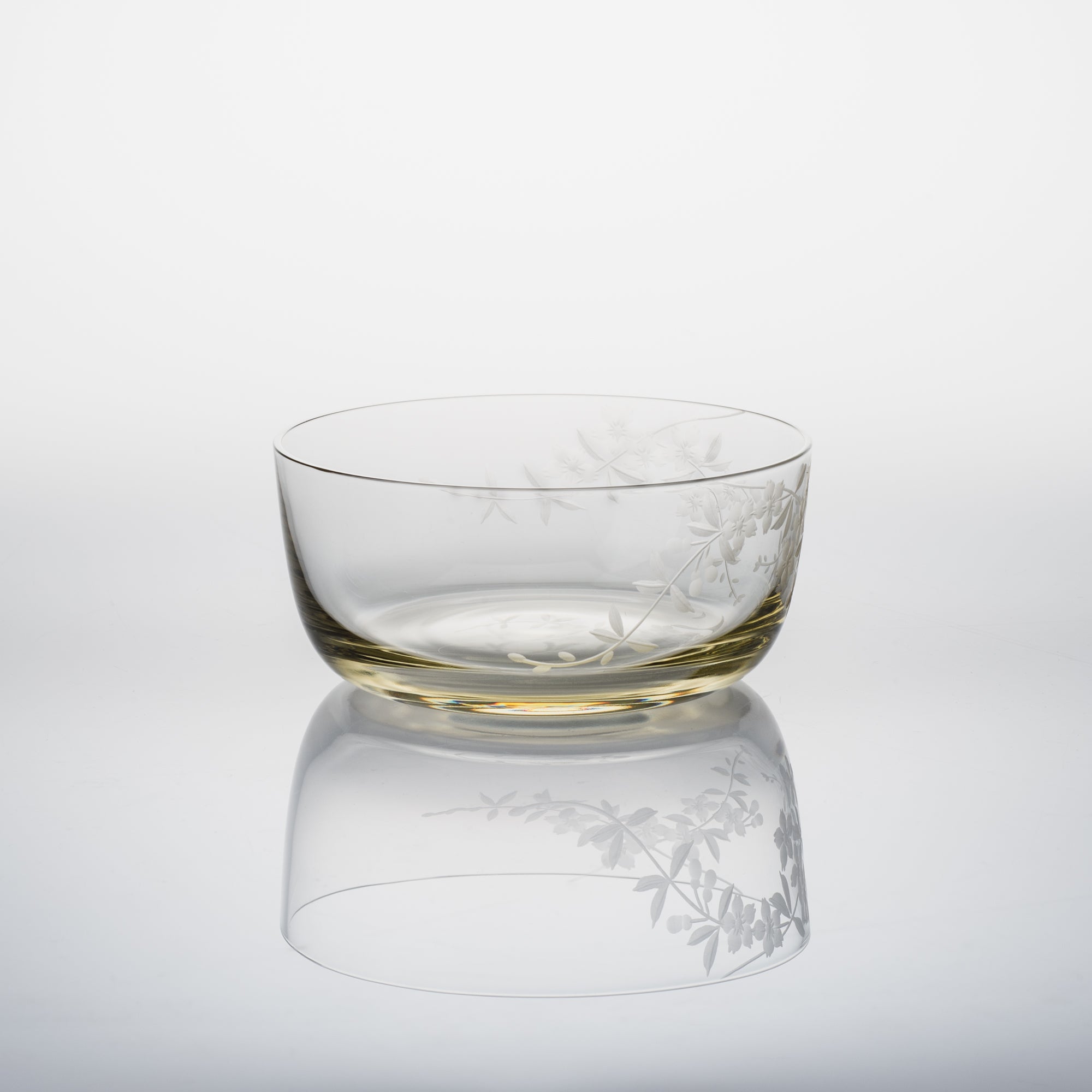
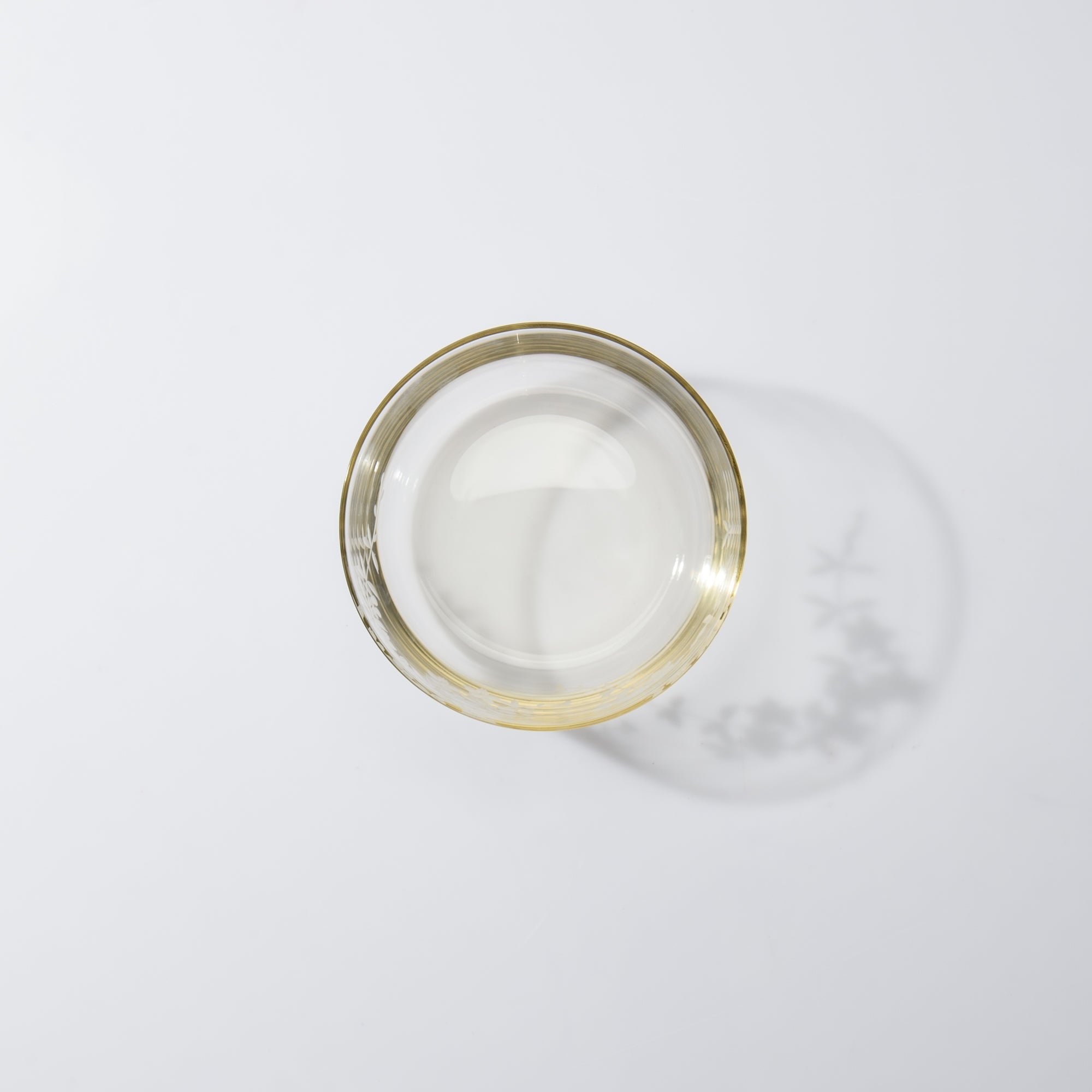
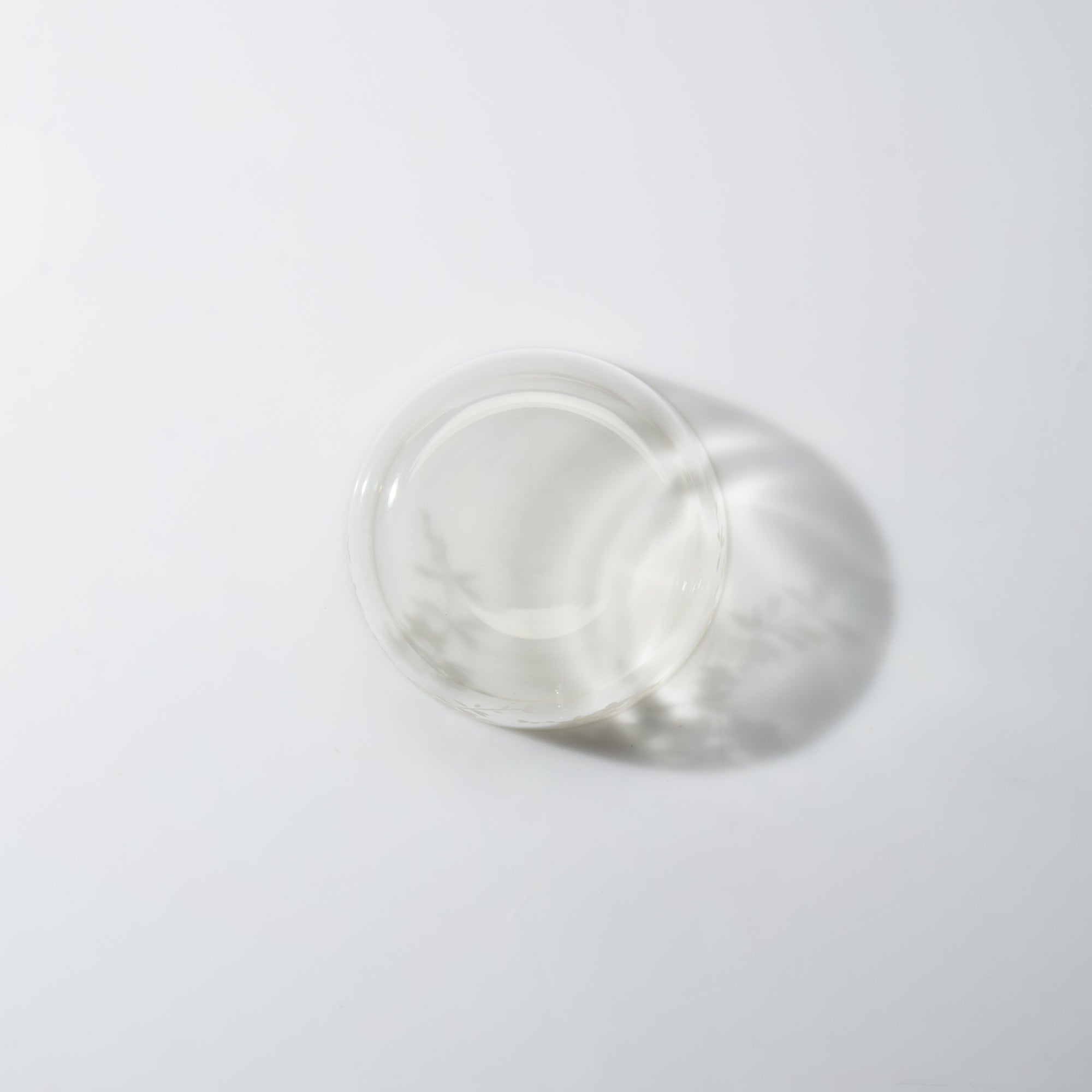


Kleine Kobachi-Schale mit weinender Kirschblüte
Estimated Shipping Widget will be displayed here!
Diese Schale ist mit der typisch japanischen Trauerkirschblüte verziert, die der Kunsthandwerker Otomo Kenji fachmännisch mit der Edo-Hanakiriko-Technik geschnitzt hat. Die Schale hat einen antiken Farbton mit einem subtilen Gelbstich und soll eine nostalgische Atmosphäre hervorrufen, wodurch sie sich perfekt für den täglichen Gebrauch eignet.
Es bringt nicht nur die Farbe und den Zustand der Speisen zur Geltung, sondern passt auch zu verschiedenen Tischmaterialien. Die schöne Spiegelung auf dem Tisch ist ein echter Augenschmaus. Ideal zum Servieren von Salaten, Desserts oder Obst, Süßigkeiten oder Eis.
Edo Hanakiriko, eine Variante des Edo Kiriko Technik, wurde während der Meiji-Ära (1868–1912 n. Chr.) aus England nach Japan eingeführt. Es erfordert meisterhaftes Können eines Kunsthandwerkers, um detailreiche Muster in die Glasoberfläche zu ätzen. Charakteristisch für diese Methode ist die Verwendung von Tiefe und Kontrast zur Darstellung eleganter Schnitte der Flora.
Bei der Darstellung von Kirschblüten und -zweigen sind nur die Zweige vorgezeichnet. Blätter und Blütenblätter werden direkt nach Gefühl gezeichnet, was jede Schale einzigartig macht. Nicht jeder Zentimeter der Oberfläche ist mit Mustern bedeckt, sodass einige Bereiche frei bleiben, was die japanische kulturelle Wertschätzung für die Schönheit des negativen Raums widerspiegelt.
Die Kirschblüten, ein von den Japanern seit langem geschätztes Motiv, machen diese Edo Hanakiriko-Schale zu einer wunderbaren Wahl für den Eigengebrauch oder als aufmerksames Geschenk.
EINZELHEITEN
| Quantity | 1 |
| Size | D 11.5 cm (4.5 in) × H 5 cm (2 in) |
| Material | Glass |
| Package Type | Paper box |
| Microwave | No |
| Dishwasher | No |
Hersteller / Marke
Hirota Glass wurde 1899 während Japans transformativer Meiji-Ära (1868–1912 n. Chr.) gegründet und gilt als einer der ältesten Glashersteller Tokios. Mit über einem Jahrhundert Erfahrung bewahrt das Unternehmen die filigranen Techniken des Edo-Glases und des Edo-Kiriko und interpretiert gleichzeitig klassische Stile neu. Von sanften Rundungen der Taisho-Ära (1912–1926 n. Chr.) bis hin zu modernen Neuinterpretationen verkörpert jedes Stück die Hingabe an Schönheit, Funktionalität und traditionellen japanischen Charme.
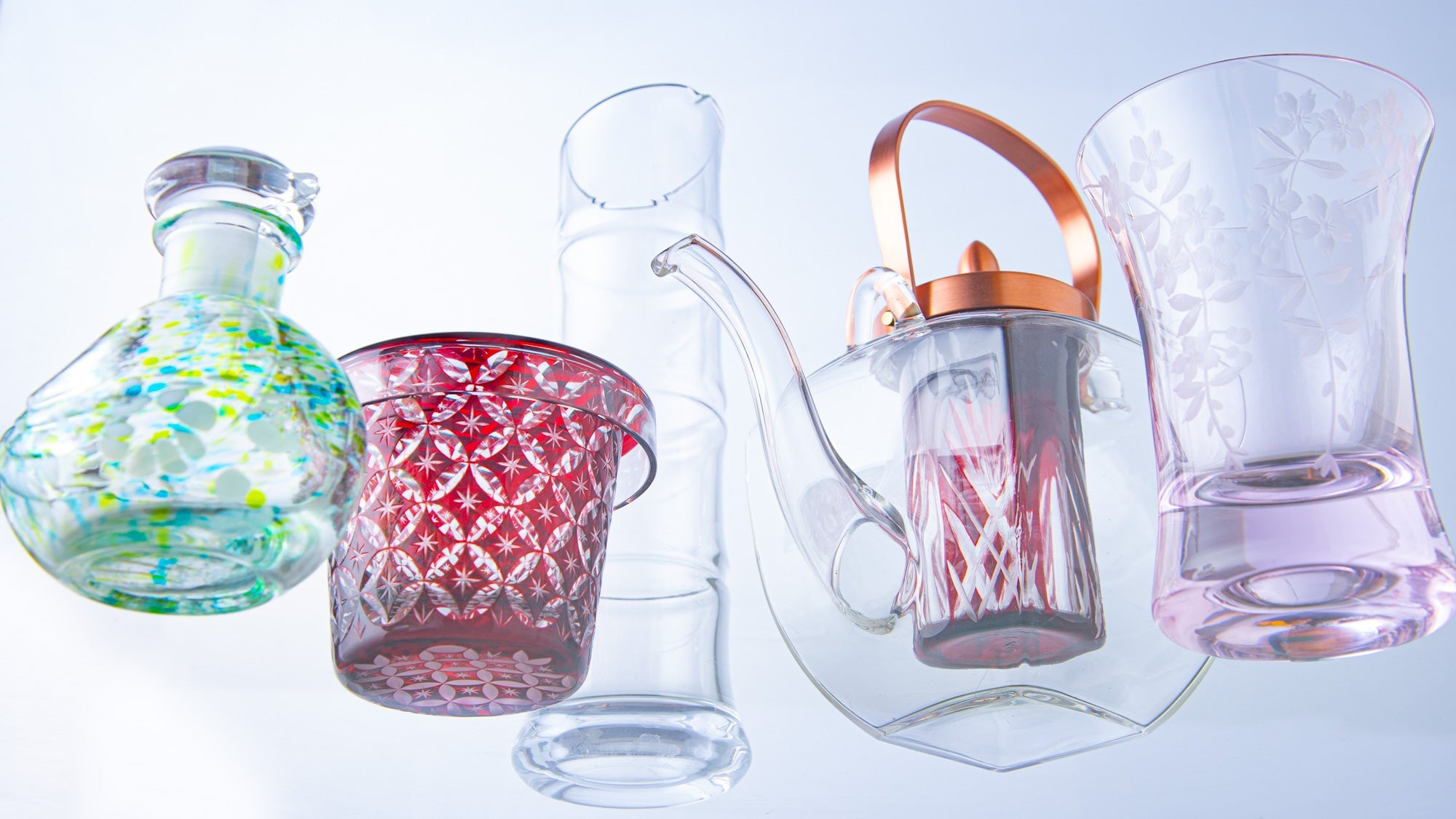
Kunsthandwerk
Tokio, die Hauptstadt Japans, ist auch ein Zentrum des Kunsthandwerks. Zu den vielen Traditionen zählen Edo-Glas und Edo Kiriko – Glaswaren, die in Edo, dem früheren Namen des Zentrums von Tokio, seit rund 200 Jahren weitergegeben werden.
Ihre leuchtenden Oberflächen spiegeln die jahrhundertealte Handwerkskunst wider, die im ehemaligen Edo-Gebiet entstand und im modernen Tokio noch immer floriert.
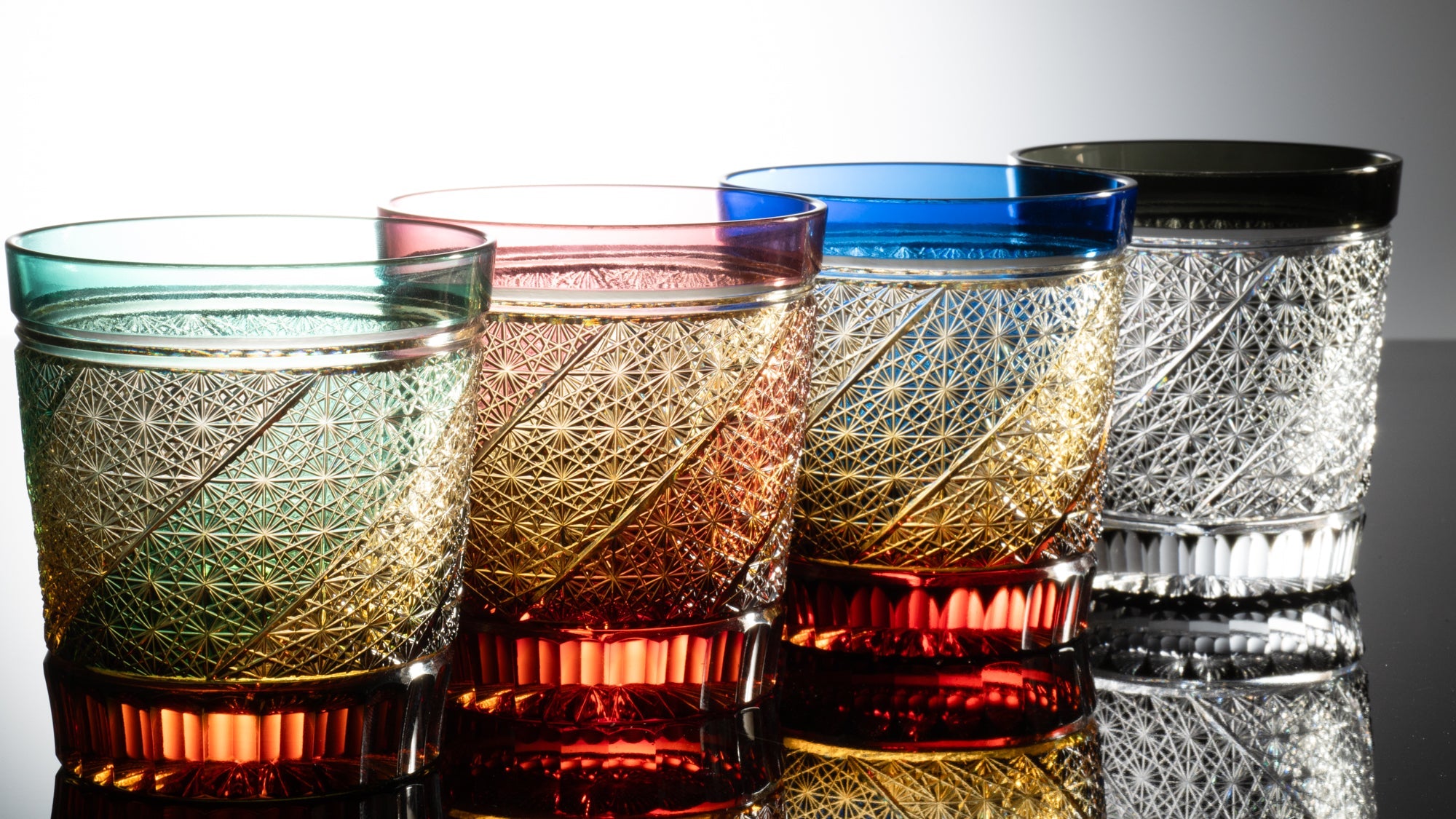
Optionen auswählen






















Estimated Shipping Widget will be displayed here!
Kleine Kobachi-Schalen
KobachiKobachi, wörtlich „kleine Schüsseln“ auf Japanisch, sind zum Servieren von Vorspeisen und Beilagen gedacht. Sie sind tiefer als ein kleiner Teller, aber kleiner als eine Haupt- oder Ramen-Schüssel und haben genau die richtige Größe für leichte Eintöpfe und gedünstetes Gemüse. Integrieren Sie eine oder mehrere Kobachi-Schüsseln in Ihr Tischgedeck und arrangieren Sie Gerichte unterschiedlicher Größe und Farbe, um Ihrem Essen eine authentisch japanische Atmosphäre zu verleihen.
In diese Kategorie fallen Schüsseln mit einem Durchmesser unter 12,9 cm (5,1 Zoll).
